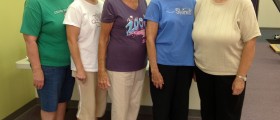An Uncomfortable State of Affairs
Suffering from bunions involves having swollen and deformed toes and some parts of your foot. This condition is uncomfortable and painful. Moreover, its treatment often requires surgery after which there is a danger of scaring, mobility reduction, and many other problems. After the bunion surgery, you are advised to rest as much as possible for the first two weeks, keeping the recovering toe elevated while lying in bed.
However, after this critical period you are highly advised to perform specific exercises, physically activating your toe in question and thereby increasing its mobility, while, at the same time reducing any possibilities of complications.
Recommended Post-Bunion Surgery Exercises
During the period between the 3rd and 4th week of your bunion surgery recovery, you are advised to do the following. For starters, take it easy by holding your toe by the area below the nail. Upon doing this, move it upwards until you start feeling mild pain and discomfort. Then, keep it in such a position for approximately 10 seconds.

After doing this correctly, change the direction and move the finger downwards, waiting for the same time upon reaching the bearable limit. You may do this up to 3 times a day, making it the first exercise in your toe workout program.
In the onset of the 5th week, all the way until the end of the 6th, you are to introduce 3 more repetitions of the above-mentioned exercise daily. Also, do not be afraid to flex the finger more each time you exercise, provided you do not feel pain during the process.
At the beginning of the 7th week, you are to be able to start walking while using your problematic toe as well. However, before you start, stand up and lean your foot in such a way that you provide Flexing to the toe, of course, stopping once you feel uncomfortable. Upon reaching the limit, hold it for 10 seconds. Do this for several days and, after feeling strong enough, start using your toe while walking, climbing the stairs, and performing other advanced motions with it.
After achieving this, there is one more exercise you can perform. Grab your troubling foot with one hand, holding its upper part so that your thumb is resting on the big toe and your fingers are on its upper joints. Then, grab the toe with your other hand and pull it out gently, holding it that way for 10 seconds.
After doing this, push it inwards in the same manner, waiting for 10 seconds once you reach the maximum in this position. Finally, keep your feet clean and seek medical assistance in any cases of persistent pain or discomfort.
- The author of the review and commentary identified 3 key muscles in the foot and 2 muscles in the calf that, when strengthened, have the potential to lessen the pain and improve the movement of patients with bunions. These 5 muscles help support body weight and forward motion. They also stiffen the arch of the foot and help keep it from rolling inward, better supporting the big toe.
- The author found that people can effectively reinforce these muscles using 3 simple exercises. The exercises—short foot, toe spread out, and heel raise—are easy to do at home and can strengthen these key foot muscles. Stronger feet may help decrease bunion-related pain and its impact on movement.
- After your physical therapist evaluates your feet and how you walk, the therapist may prescribe these 3 exercises, additional hip- and leg-strengthening exercises, and possibly arch supports. The exercises to strengthen your feet are easy to perform. If you have trouble with them, though, your physical therapist may add electrical stimulation to help you learn which muscles to contract.
- Your physical therapist can also guide you on proper shoe selection to improve your ability to walk and exercise without discomfort. While they may decrease pain and improve movement, these exercises likely won't change the look of your bunion.
- www.nhs.uk/conditions/bunions/
- medlineplus.gov/ency/patientinstructions/000191.htm
- Photo courtesy of BruceBlaus by Wikimedia Commons: commons.wikimedia.org/wiki/File:Bunion.png

















Your thoughts on this
Loading...